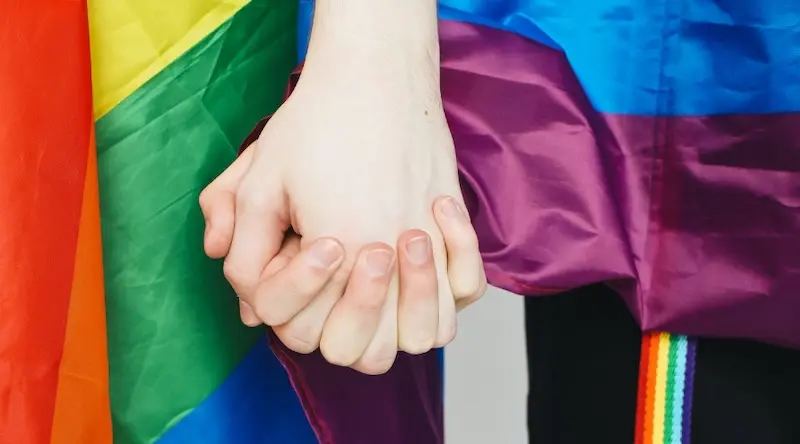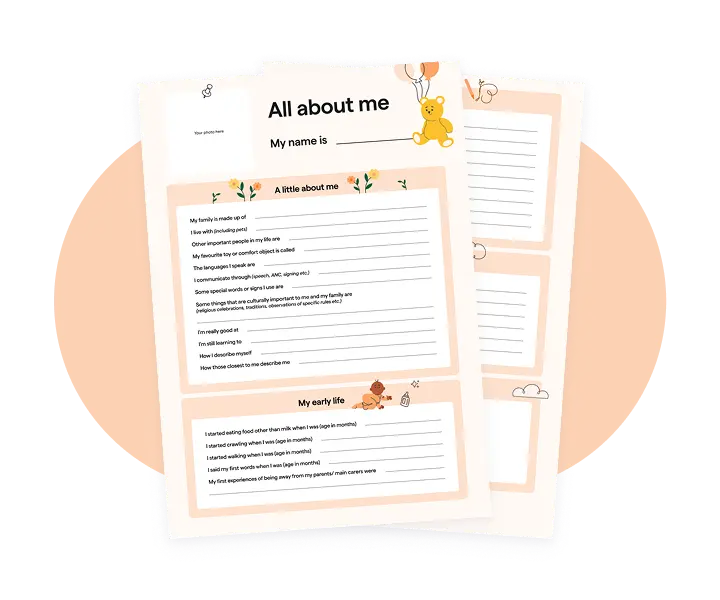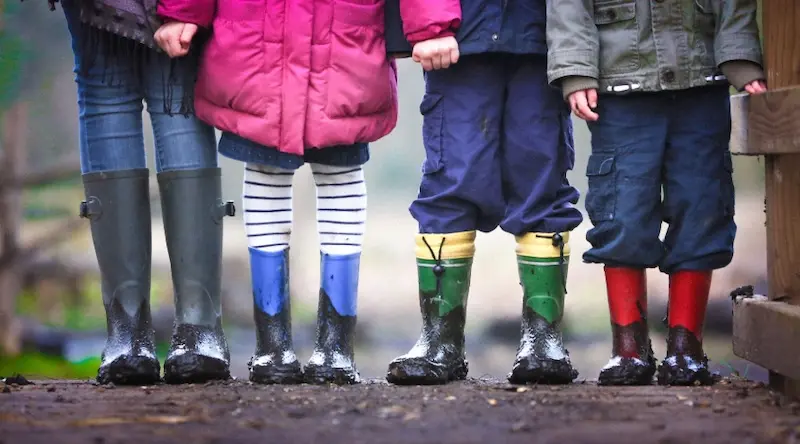settings
children
With Famly since
The importance of representation within the Early Years is a subject of continual discussion.
What do we hope to add to that discussion? Well, we felt like we had heard from so many other professionals about the different ways that we should promote diversity and support children and families within the sector.
Yet, there wasn’t a lot of accessible information to help us explore why we do things the way we do when it comes to discussing LGBTQIA+ in the Early Years.
Some settings had even told us that they didn’t focus on this enough “in case the parents find out”. In fact, it’s something we hear a lot. We thought it was time to ask why, and what we can do about it.

Why are some Early Years settings afraid of focusing on LGBTQIA+ Awareness?
It’s so important to be reflective on our own practice and think about why it might be that people worry about how to discuss LGBTQIA+ in the Early Years. We wondered:
- Is it due to individuals not knowing enough about a certain aspect of the LGBTQ community?
- Is it that they fear addressing an issue that they aren’t totally confident in?
- Or is it that they may be taken out of their own comfort zone when looking at these important issues with the children?
But pushing ourselves from our comfort zone is how we improve. Ultimately, how would a child in our setting feel within their day-to-day experiences if they knew that they felt different to other children in some way but didn’t have a trusted adult to help them?
That’s why, in 2020, the LGBTQIA+ Early Years Working Group was formed. There are now 17 members involved, each working within different sectors and roles from Early Years settings through to schools.
What does heteronormative mean in the Early Years?
Heteronormativity is the idea that society views heterosexuality as the ‘norm’. This means if you’re part of the LGBTQIA+ community, you’re seen as different. Then along with that, come gender stereotypes and negative viewpoints that can easily harm people who don’t fit that heternormative view of the world.
As with anything in the Early Years, to help improve our approach on a certain issue, it is always about bringing the narrative back to keeping the unique child at the centre of our approaches and celebrating this. With that in mind, let’s start with why this matters.
The big ideas

Why do we need to get involved when it comes to LGBTQIA+ representation in the Early Years?
Just like us, you may be thinking, why? Why do we need to get involved when it comes to LGBTQIA+ representation?
Well, let’s take a trip to an early years setting. Within this setting there is a same-sex female parent couple and their 3-year-old Maisey attends full-time. Maisey is positive, confident within her play – generally a happy young human. One day, Maisey asked her key worker, Paul, ‘Paul, where are the pictures of my mummies?’.
What she meant was – where is my representation?
Maisey comes from a loving home, but when she goes to nursery, like all children she’s soaking it all in. And she’s starting to notice that her voice is missing. Where is her family, she’s wondering, which she knows as the ‘norm’ at home.
We’re sure you can start to connect the dots. This story leads us into our why…
Children quickly pick up on whether their environment represents them – or not. Representing the voice of every child is crucial for learning and development, and that’s why it’s so important to get to know your parents or carers who identify as LGBTQIA+.

Getting to know your LGBTQIA+ families
It’s important that you ask the same questions of LGBTQIA+ families that you ask everyone, but you could also ask some questions which are specific to them, such as:
- What names does your child call you?
- How would you like us to refer to you when we speak to your child?
- How would you like us to describe your family to others, children and families etc?
- How would you like me to respond to questions about your family?
Something to bear in mind is that even though these questions are quite open, some parents and carers who identify as LGBTQIA+ may be quite private, and might not be comfortable straight away with sharing details about their home life or family relationships. This is where it’s so vital that your environment is as inclusive as possible, and you’re prepared to answer all questions children ask – so that children like Maisey have the opportunity to see a true reflection of society today.
How to create a welcoming environment for LGBTQIA+ families in the Early Years
Within your setting, it is important to make every effort to make your environment welcoming and nurturing for members of the LGBTQIA+ community.
Here are some examples, a start to reflect on your setting and how you can make your environment inclusive:
- Make all of your forms reflective of the language that is welcoming to all kinds of families – for example, changing the spaces that request the names of ‘father’ or ‘mother’, instead using ‘parent’ or ‘guardian’
- In your written communication, address families with inclusive phrases like ‘Dear Parents and Carers’ or simply ‘Dear Families’
- Make diverse images more visible in your setting, with books, posters and play equipment that visually represents all children and families within our society.
There are lots of fantastic resources and guidance already out there to help you be a more supportive setting for all children and families. These include fantastic case studies about how settings have already moved forward with being a good example of LGBTQIA+ inclusivity fromour own LGBTQIA+ Early Years Group and this Early Years toolkit from Stonewall.
Our advice would be to start by taking some time to reflect on where you are as an organisation and as individuals. Ask:
- What is your current curriculum and delivery of LGBTQIA awareness?
- How often do you discuss this?
- What resources do you have that show same-sex families?
- Is your delivery merely a gesture, or is it embedded within your ethos and culture?
We know from experience and discussions with other settings that everyone is on a journey in their learning and delivery of LGBTQIA+ awareness. Knowing this and accepting this will make it easier to ensure that the discussions you have with your teams aren’t focused on who is ‘right and wrong’ but instead framed around the needs of the children and of their families. If you’re so afraid of getting things wrong that you can’t have that discussion to begin with, then making any progress is going to be almost impossible.

Engaging LGBTQIA+ families beyond your Early Years setting
Engagement with the wider community is also very important. As with everything that we do within the Early Years, we need to ensure that we are communicating with families about our offer and how we celebrate differences – this includes our LGBTQIA+ delivery.
Children in your setting might have same-sex parents, same-sex relatives or may be on their own journey to explore their gender. These are all great learning opportunities for the child, but also for us as professionals. The community and families that you work with will be a great resource to help shape your discussions and experiences with this. We need to ‘normalise’ the discussions around LGBTQIA+, so that this is seen as of equal importance to all other discussions around personal development.
In summary, you should:
- Make sure that your offer is embedded within your ethos and that your discussions with colleagues and families are focused on the child.
- Constantly review what you’re doing and how you’re doing it, asking – does it showcase the best that you can be?
- Use readily available resources for inspiration and ensure that this is a longer-term plan for your setting.
- Embrace the challenges and prepare for them, by talking with other settings who may be further ahead on their journey.
- Remember, that doing the right thing for the child and family may not always be the easiest thing to do. But this shouldn’t detract from the work we do each day to prepare our children for life in the modern world.
The hope…
We hope that this blog will inspire you to reflect on your own values and beliefs, as well as that of your setting. We know that this may be a sensitive issue for you to discuss with colleagues and to get started with, but as with all areas of personal and social development it is key to ensure that you’re meeting the needs of the unique child and their family.
There are laws and protections in place to support this work, including the Equality Act 2010, which can be referred to when framing discussions and training to help.
The support that we provide to each other is even more important now and in the future and learning from each other’s strengths and areas of development will ensure that each child in every setting is getting the best start in life.
Every child and family has the right to feel included and represented within their setting. We hope that this blog, the magazine and awareness week help to inform wider discussions across all Early Years settings to ensure that we get it right from the start. Our children are with us for a relatively short period of their formative years and we need to be confident and courageous in delivering what is right for every one of them. Be proud of your setting and its offer and be the hope for every child and family that you work alongside.
Aaron Bradbury is a Principal Lecturer in Early Childhood at Nottingham Trent University, and has been working in the Early Years. He’s currently a member of the Executive Committee of the ECSDN (Early Childhood Studies Degree Network), the co-founder of The Early Years Academy and provides an online platform for practitioners and all Early Years professionals via his app and website, Early Years Reviews by Aaron.
Gary is the Headteacher of a special school in Derby and has over 12 years’ experience within teaching and school leadership. He lives with his husband in Birmingham and has worked in many different settings, including Early Years and primary schools (both mainstream and SEND). Gary introduced and hosts the fortnightly SENDVoices Twitter chat held on a Saturday morning and plans to host a special online BrewEd focusing on SEND.
Try learning journals for free
Add observations, and build digital learning journals to share with families instantly. All with your completely free 14-day trial.
Get started










